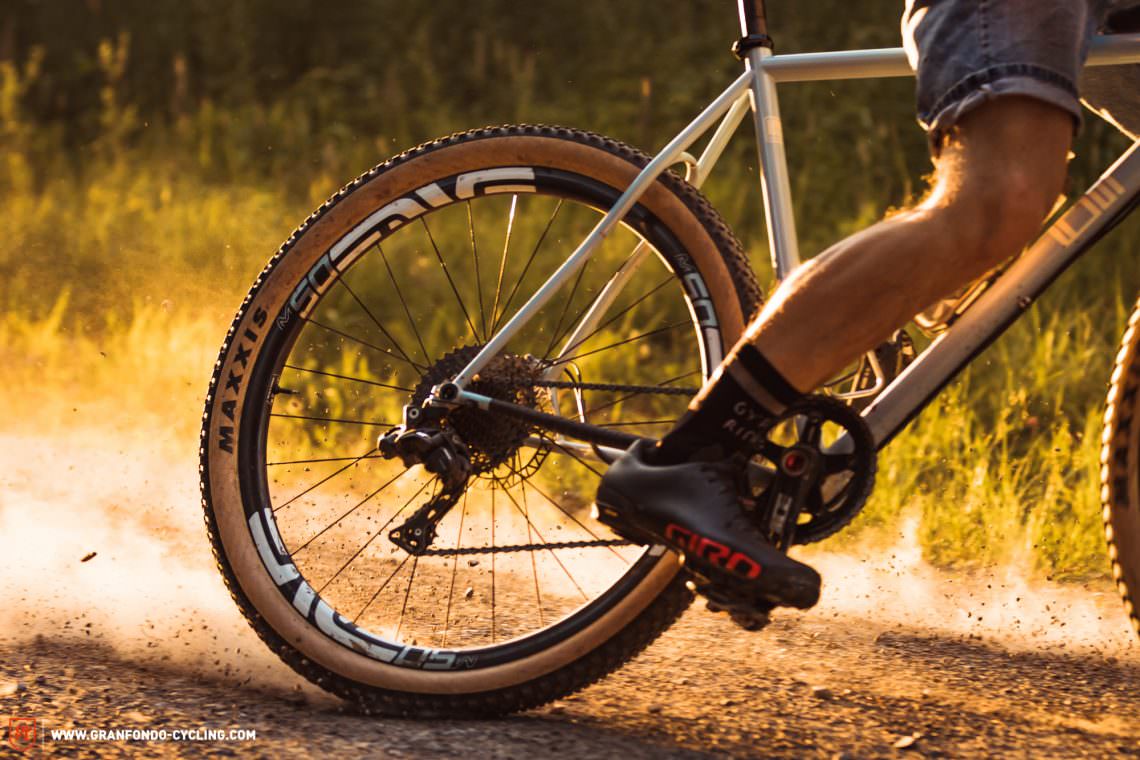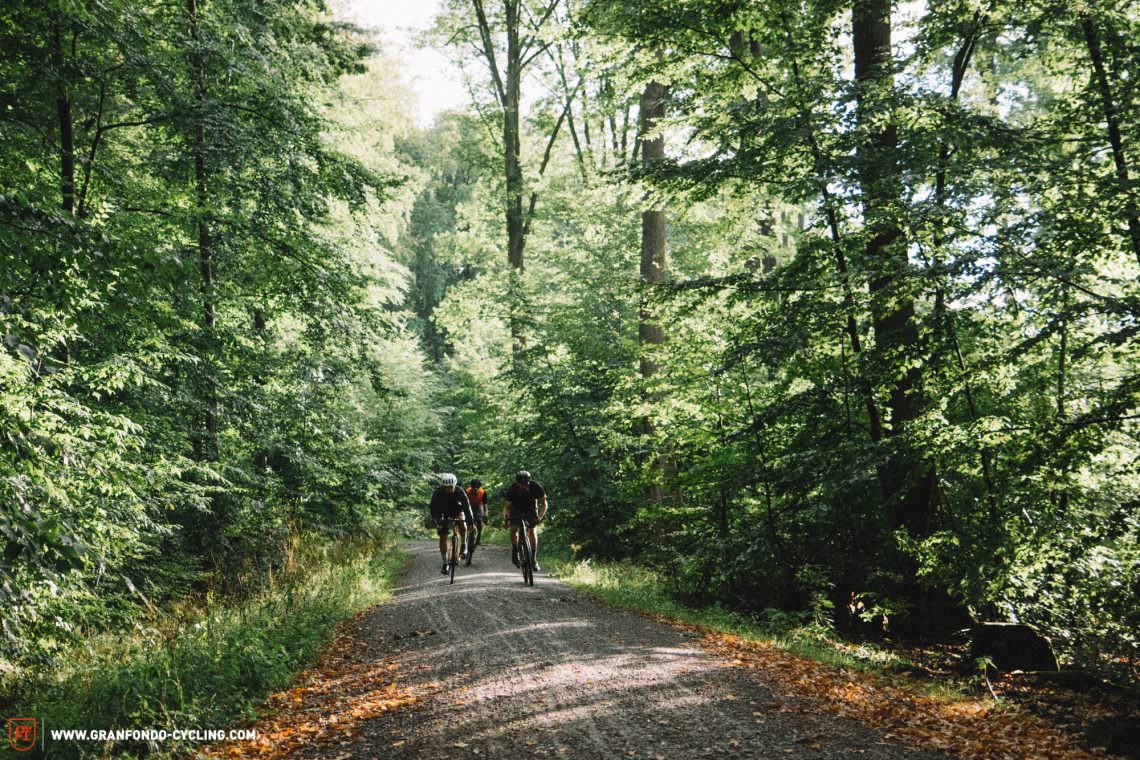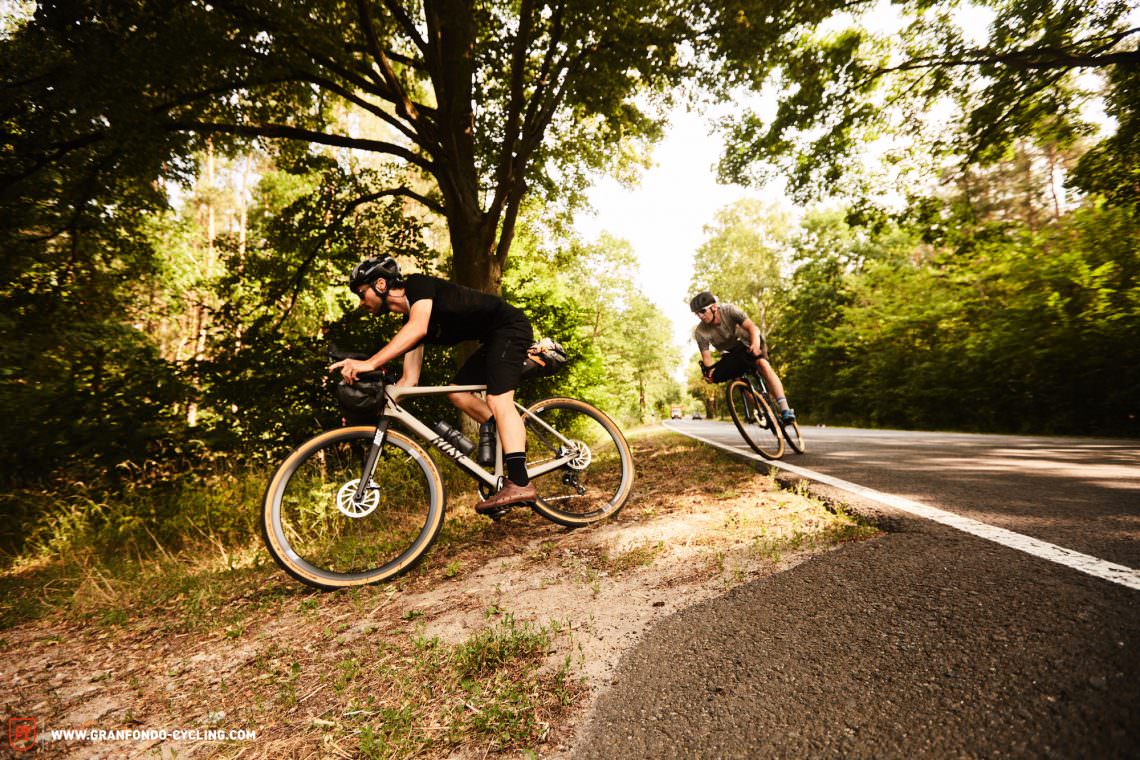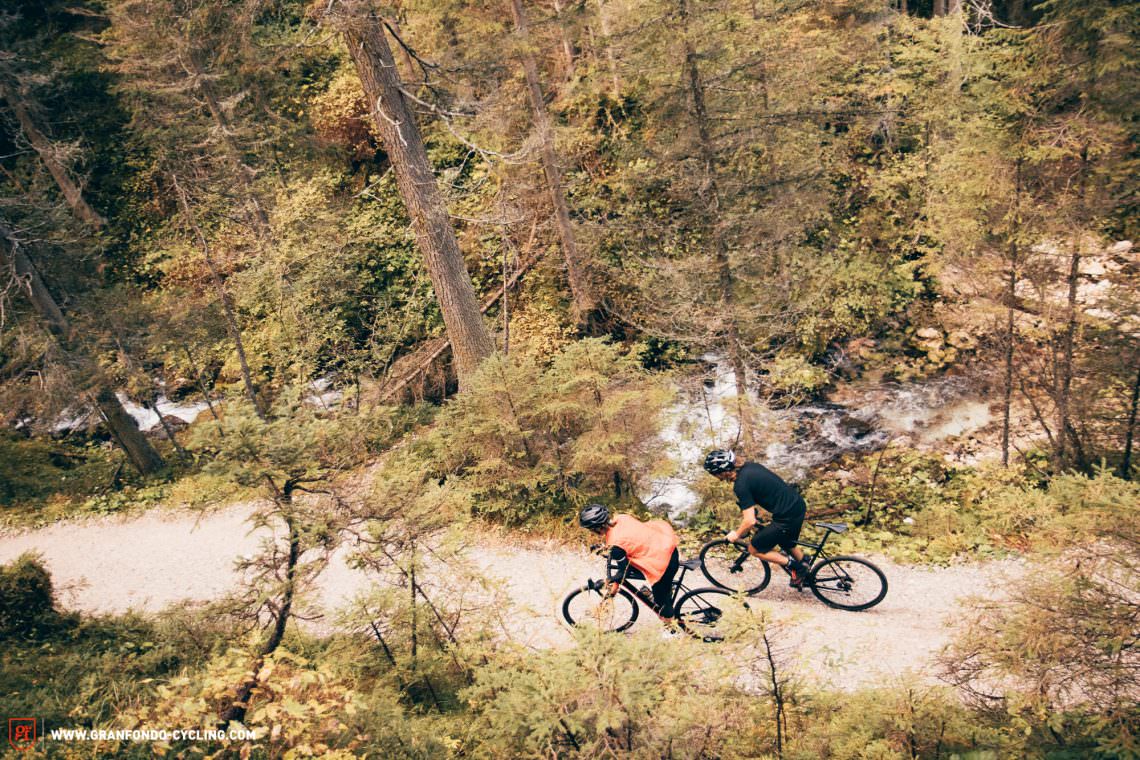Why has gravel become so incredibly popular? Because no other category is as versatile and beginner-friendly. On a gravel bike, you can explore the world, rediscover your own turf, enjoy your daily commute to work and even spice up a boring training plan. In this article, we will tell you everything you need to know about gravel.

Gravel bikes overview
The gravel sector is just as versatile and diverse as the entire road bike sector: slim 700C tyres, chunky 650B slicks and even 29″ mountain bike wheels, 1x or 2x drivetrains, sometimes lightweight sometimes bombproof, quick after-work fun or week-long adventures with frame bags. In the gravel segment, everything is possible and manufacturers are using expressions like adventure bikes, monster cross, all-road, road plus all throughout their product portfolios. These terms want to define the distinctive character of each bike and identify their field of applications. But apart from just sharing a dropper-bar, all gravel-bikes are built with the same idea in mind: riding fast on all types of terrain. And of course, there is a vast assortment of applications and for each a selection of comparable bikes but there are also universal guidelines that describe the gravel phenomenon in all its different facets regardless of the specific niches. The first part of our series wants to give you a comprehensive overview outlining all of the most important differences and help you pick the right bike.

What makes a gravel bike?
There are three basic concepts that make gravel bikes so exciting. Number one: Light and fast. In fact, these are the lightest and fastest bikes you can ride on varying terrain. This doesn’t necessarily mean you HAVE to ride fast, but you probably will – it’s in these bikes’ nature. But it’s not just the bikes that follow this philosophy; all of the equipment, including the bags, follow a minimalist concept. They’re light, functional and reflect the gravel principle of as little as possible, as much as is necessary.
Number two: Go anywhere, do anything. One more intriguing reason to ride gravel right there! Every surface becomes rideable: the gravel path at the end of the tarmac is just as much fun as the winding serpentines you just climbed and the boring MTB single-trail becomes a new exciting challenge. The possibilities are endless and start right in your driveway whether it’s an undiscovered dirt-track or beaten-up tarmac strip outside the old brick factory in the outskirts of your town. But where are the limits of gravelling? Are there any at all? The only limitation is the one you set in your mind. Riding steep root carpets or deep sand lanes might not be an option on a gravel bike, yet all you have to do is carry your bike for a few metres before another epic gravel road with breathtaking views over the valley, or a secluded path around a freezing mountain lake opens up right in front of you …
And finally, the third and most important principle of gravelling: It’s about having fun and enjoying your ride and not about all-out performance. Of course, each person has their own idea of fun but gravelling is not about destroying yourself in the peloton, chasing your next KOM or crushing some random guy on the next traffic light sprint. It’s the spirit of adventure, the desire of discovering something new and the fun of riding that keeps us going. The togetherness of it and the happy, carefree spirit of exploring. These are the catchwords that make gravel so incredibly attractive. Turn off your Strava and ride on! Who cares if you clocked 50 or 250 kilometres on your last ride if you can spend the best part of 3 hours telling everyone what you’ve experienced and seen on the way and why your last overnighter felt like an entire week of holidays.
Gravel bikes bridge the gap between mountain bikers and road riders.

How are you planning to use your gravel bike?
As we said before the possibilities are almost endless. But it makes sense to spend some time thinking about where and how you want to ride your bike and choose or even build one accordingly. A 29” steel-frame adventure-monster might look impressive but if you end-up riding 90% on tarmac roads and gravel paths a lightweight Road Plus carbon frame with chunky 650B slicks will be a much better option. The market offers an impressive and immensely varied range of gravel-bikes and each manufacturer offers their very own interpretation of the segment. Depending on the brand some bike-concepts give you the option of running different wheel sizes i.e. 700 x 40C or 27.5 x 2.1″ on the same frame. Other brands offer the same bike model in different versions, suited either for more on-road or off-road riding (e.g. Norco Search XR). Sometimes you’ll even find the same bike model in different frame materials (e.g. RONDO RUUT). Gravel bikes, however, can be roughly divided into three main categories based on features, spec and geometry.
Backroad Gravel-bikes
These bikes are often very similar to normal road bikes and make up the largest share of the market. They’re usually pretty light, very agile and feature geometries which remind us of classic road-, CX- or endurance-bikes. Most of the time they combine 700C wheels with tyres up to 40C width with little or no profile. These bikes are designed for a healthy mix of tarmac, gravel, forest roads and dirt paths – less so for rough terrain or single-track. The Festka ONE Gravel, the Trek Checkpoint, the RONDO RUUT and the Canyon Grail are some of the representatives of this category.
Adventure Gravel-bikes
In this subcategory, the influence of mountain bikes is clearly stronger. These bikes feature chunkier XC tyres with a more aggressive profile and tyre widths ranging between 1.9″ and 2.1” – combined with either 27.5″ or 29″ wheel sizes. They’re mainly intended for off-road riding – everything from fun single-trails to chilled out week-long bikepacking adventures – but still significantly faster than common mountain bikes on tarmac roads and soft gravel paths. Accordingly, they often feature a number of mounting points for bottle holders, special bags, racks and the like. Most of the time these bikes also have a slacker head-angle and wider handlebars with a stronger flare which inspire more confidence on challenging terrain, as well as a taller stack for better comfort. Examples: Salsa Cutthroat, Ibis Hakka MX, Kona Sutra LTD, All-City Gorilla Monsoon, Bombtrack Hook EXT, Legor Cicli LWTUA, GHOST FIRE ROAD RAGE 6.9 LC 29″.
Special bikes and custom builds
This section you’ll find everything that doesn’t belong to a specific category. For example, the OPEN U.P. is only available as a frameset and can be built either as a thoroughbred road bike or a rad adventure-steed, depending on the choice of wheels and tyres. In our opinion, this is currently still one of the most versatile bikes on the market. Just because some bikes share the same wheel/tyre concept it doesn’t mean that they necessarily feature the same riding characteristics nor that they were designed for the exact same purpose. The 3T Exploro, the Surly Midnight Special and the Bombtrack Audax use 650B wheels with chunky 47C slick-tyres as standard yet have some definite road DNA in their geometries; the GHOST ENDLESS ROAD RAGE 8.7 LC 27″ on the other hand shares the same tyre-concept but offers totally different handling characteristics. Finally, there is the magic world of custom bikes which allows you to implement just about every idea or concept you could imagine.

Fit & Feel
At first glance, most gravel bikes may look like conventional CX bikes, sometimes even like road bikes with chunky tyres. However, this initial impression can be deceptive as the geometries are likely to be radically different. While road and CX-bikes share a similar seat- and head-angle and lower stack, most gravel-bikes feature a slacker head angle to allow for more stability off-road. Similar to endurance bikes they often feature longer head-tubes — and a higher stack as a consequence – which translates into a more comfortable position. In addition, the stems are usually shorter. Often the top tube is strongly sloped to generate more standover height and thus inspire more confidence.
Gravel-bikes vs. Mountainbikes
The more we shift towards the off-road segment the clearer the differences become. A 29″ adventure bike is often closer to a mountain bike than it is to a road bike. In reality, the only remaining constant is the frame which is designed for drop bars and therefore has a shorter top tube to compensate. Using a racing handlebar on a normal mountain bike would require, at the very least, a smaller frame size.
The right frame sizes
The sizing on gravel bikes is not that different from common road bikes. If you’re riding on a 54 cm road bike you want to stick to the same frame size with your new gravel bike. It’s worth mentioning that many manufacturers use S-M-L specifications instead of cm-sizing and often just have three or four frame sizes to choose from. But don’t worry too much about it; the frequently changing terrain will force you to switch riding positions all the time and you never end up riding in the same position for too long. This means that it’s not critical if the frame is either a tad too small or too big – you’ll be fine. If you find yourself in between sizes, grab the bigger one if you intend to do long or multi-day trips, the smaller one if you mostly are planning on short and fast rides.

There’s no reason not to own a gravel bike.
If you’re planning to use the bike for commuting purposes you should make sure your new frame has enough room and suitable mounts to accommodate a pair of mudguards that fit over the original wheels. Many manufacturers even develop their own complete systems. The story is slightly different with fixed lighting systems and classic luggage solutions. Mounting points for pannier-racks – even smaller front-end bags – are an exception in this sector and the bikes are mostly designed for bags that attach directly onto the frame. If you’re not prepared to surrender your racks, you should consider a Randonneur bike. These bikes are designed for long distances and usually feature mounting points for mudguards and fixed lighting, carriers and bags; in addition, the forks are designed to withstand heavier loads. Apart from this Randonneurs are pretty much like gravel bikes as far as the intended use goes.







